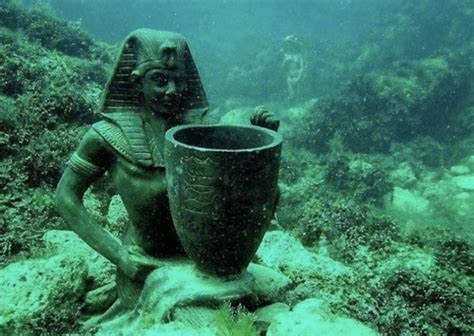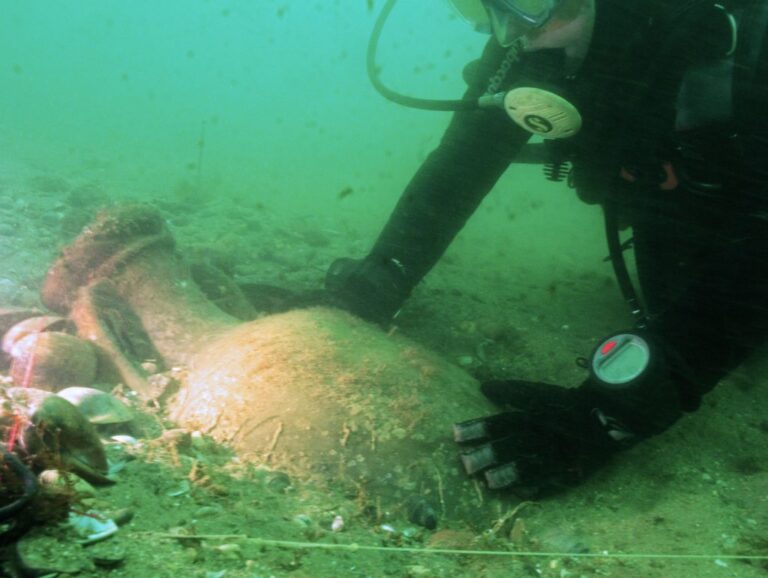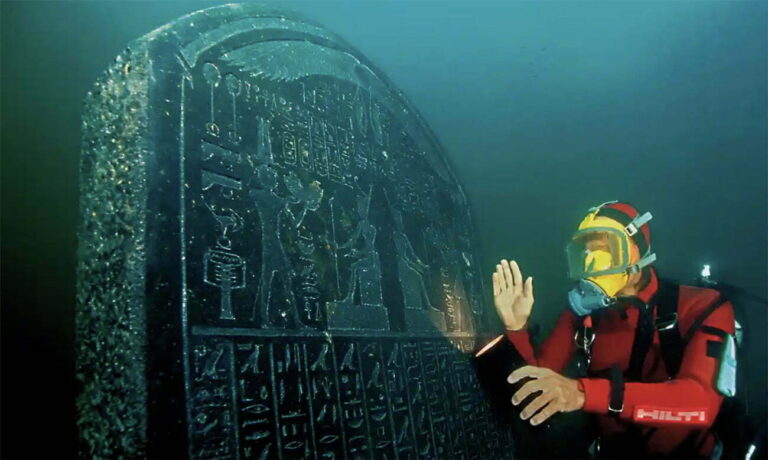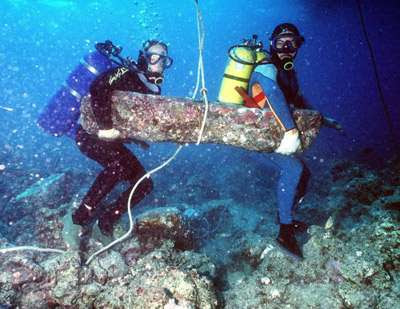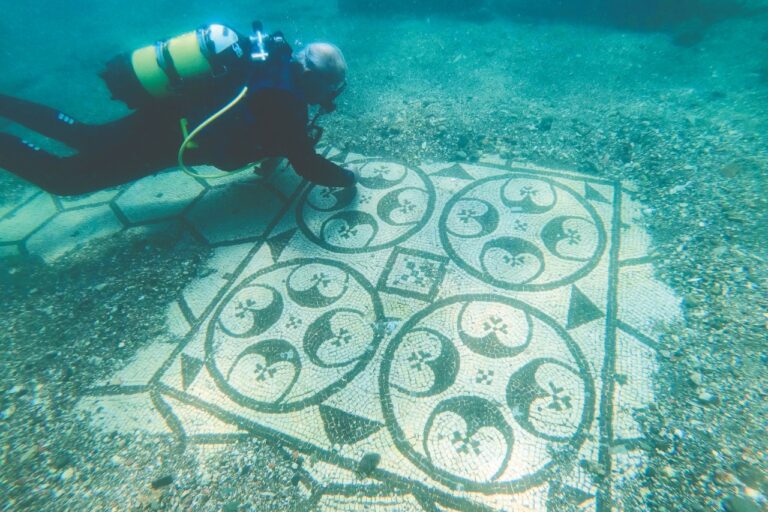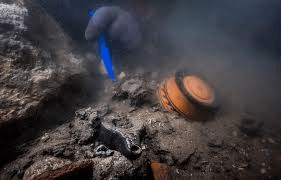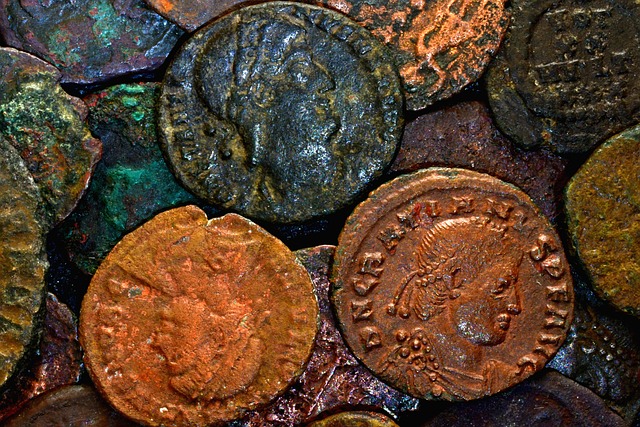Uncovering Lost Treasures: Underwater Discoveries
Underwater discoveries have always captivated the human imagination. The depths of the ocean hold a certain allure and mystery, as they are home to countless lost treasures and ancient artifacts waiting to be uncovered. Exploring underwater not only allows us to unravel the secrets of the past but also provides valuable insights into our history and culture. Indeed, the significance of underwater discoveries cannot be overstated. By venturing into the depths, we embark on a journey to uncover the hidden gems that lie beneath the waves.
Table of Contents
Understanding Underwater Archaeology
Underwater archaeology is a specialized field that involves the study and exploration of historical artifacts and remains found underwater. It differs from traditional archaeology in that it focuses specifically on submerged sites and treasures that have been lost beneath the ocean’s depths. By delving into these underwater environments, archaeologists are able to uncover a wealth of information about past civilizations and their interactions with the sea.
However, this unique branch of archaeology comes with its own set of challenges. Limited visibility is a major obstacle for underwater archaeologists, as the murky waters often make it difficult to see and identify artifacts. Additionally, the high water pressure at greater depths can pose risks to divers and the integrity of the archaeological sites. Another crucial concern for underwater archaeologists is the preservation of artifacts, as these underwater environments can rapidly deteriorate delicate materials.
To overcome these challenges, advanced technologies have been developed and are now integral to underwater explorations. Underwater drones, equipped with high-definition cameras and sonar systems, provide a valuable tool for mapping and surveying underwater sites with precision. Side-scan sonar, for instance, allows researchers to create detailed images of the seabed, while remotely operated vehicles (ROVs) enable exploration and recovery of artifacts without the need for human divers to directly interact with the sites.
These advanced technologies have revolutionized underwater archaeology, making it possible to explore and document underwater sites that were previously inaccessible. By utilizing underwater drones, side-scan sonar, and ROVs, archaeologists are able to conduct detailed investigations and preserve historical artifacts while minimizing potential risks. The application of these technologies not only enhances the safety and efficiency of underwater explorations but also contributes to our understanding of human history and the cultural significance of these hidden treasures.
Most Notable Underwater Discoveries
Underwater discoveries have captivated the imagination of people for centuries, with the allure and mystery surrounding lost treasures in the depths of the ocean. Throughout history, there have been several famous underwater discoveries that have not only provided a glimpse into the past but also greatly contributed to our understanding of history and culture.
One such notable discovery is the Titanic. The story of the ill-fated luxury liner that sank in 1912 has captured the hearts of many. The discovery of the shipwreck in 1985 by Dr. Robert Ballard and his team showcased the immense scale and devastation of the tragedy. The artifacts recovered from the wreckage have provided valuable insights into the daily lives of those onboard and have helped preserve the memory of the event.
Another remarkable underwater discovery is that of the Elgin Marbles. These ancient Greek sculptures were originally part of the Parthenon, but were removed by Thomas Bruce, the 7th Earl of Elgin, in the early 19th century. They were subsequently sold to the British Museum, where they have been displayed ever since. The significance of this discovery lies in the controversy surrounding the ownership and repatriation of cultural artifacts.
These underwater discoveries have had a profound impact on our understanding of history and culture. By exploring and recovering these lost treasures, we are able to gain insights into the lives of civilizations that have long been forgotten. The historical context surrounding these discoveries helps us piece together the puzzle of the past and fills in gaps in our knowledge of ancient civilizations.
Furthermore, these discoveries provide a tangible connection to the past, allowing us to see and touch artifacts that were once part of a different era. This not only enhances our appreciation for the craftsmanship and creativity of those who came before us but also brings history to life in a way that textbooks and lectures cannot.
In conclusion, the most notable underwater discoveries, such as the Titanic and the Elgin Marbles, have significantly contributed to our understanding of history and culture. They provide a unique window into the past and allow us to connect with civilizations that have long been lost. By delving into their historical context and significance, as well as examining how they were recovered, we are able to appreciate the impact that these discoveries have on our knowledge of the world’s history.
Uncovering Ancient Shipwrecks
Shipwrecks have long captured the fascination of explorers and historians alike. These sunken vessels hold not only remnants of the past, but also intriguing stories waiting to be unraveled. Among the most notable shipwrecks are the Mary Rose and the Vasa, which offer valuable insights into navigation, trade, and seafaring technologies of ancient times.
The Mary Rose, a 16th-century warship, sank in 1545 off the coast of England during a battle with the French fleet. Rediscovered in 1971, this remarkable archaeological find provides a remarkable glimpse into Tudor naval history. The ship, once a symbol of Henry VIII’s navy, contained a treasure trove of artifacts, from cannons and weaponry to personal items of the crew. The intricate preservation of the ship allows experts to study the advancements in shipbuilding technology, as well as the daily lives and societal norms of sailors during that era.
Similarly, the Vasa, a Swedish warship commissioned by King Gustav II Adolf in the 17th century, met a tragic fate when it sunk in 1628 on its maiden voyage. Rediscovered in 1956 and remarkably preserved due to the brackish Baltic Sea conditions, the Vasa stands as a testament to the grandeur of Swedish naval power during the time. The ship’s artifacts provide valuable insights into ship design, navigation techniques, and seafaring traditions of the era.
These shipwrecks serve as time capsules, offering a unique window into the past. They provide invaluable clues about the technological advancements, trade networks, and naval strategies of ancient civilizations. By studying these wrecks, researchers can piece together the puzzle of our maritime history, revealing a greater understanding of how societies operated and interacted with the world around them.
In conclusion, the allure of ancient shipwrecks lies not only in the mysteries they hold but also in the wealth of knowledge they offer. The stories of the Mary Rose and the Vasa highlight the importance of uncovering these underwater treasures. By analyzing the artifacts, researchers can shed light on various aspects of navigation, trade, and seafaring technologies of the past. As we continue to explore the depths of our oceans, there is no doubt that more remarkable shipwreck discoveries and their fascinating stories are waiting to be revealed.
Sunken Cities and Lost Civilizations
The allure of legendary sunken cities has captivated the imagination of many, as tales of mythical places like Atlantis and Thonis-Heracleion have been passed down through generations. These lost civilizations, believed to have been swallowed by the depths of the ocean, have always been a source of fascination and mystery.
Among the astonishing archaeological discoveries that shed light on these sunken cities are the submerged ruins of Dwarka and Port Royal. Dwarka, a city mentioned in ancient Hindu texts, is believed to have existed around 3,000 BC and was once a thriving coastal town. Similarly, Port Royal was a bustling pirate haven in the 17th century before a devastating earthquake submerged it beneath the waves.
These sunken cities have provided invaluable insights into ancient urban planning and cultural practices. The ruins unearthed in Dwarka have revealed evidence of sophisticated city planning, with well-organized streets and structures. Similarly, Port Royal’s submerged remains have provided a glimpse into the vibrant and rowdy social scene of a pirate-infested city.
Moreover, exploring these lost civilizations has allowed researchers to understand the effects of natural disasters on human settlements. The sinking of cities like Dwarka and Port Royal serves as a reminder of the power of nature and its ability to reshape the course of history. Studying these submerged ruins allows us to better comprehend how communities of the past coped with and adapted to such catastrophes.
Overall, the study of sunken cities and lost civilizations offers a unique perspective on our ancient past. These archaeological discoveries enable us to gain a deeper understanding of ancient urban life, cultural traditions, and the resilience of human societies. As we continue to explore the depths of our oceans, there is no doubt that even more captivating and significant discoveries await, just waiting to be uncovered.
Environmental Impact and Conservation Efforts
Underwater explorations and excavations have the potential to greatly impact the environment. The disturbance caused during these activities can disrupt delicate ecosystems and harm marine life. It is crucial, therefore, to address the potential environmental impact and take measures to minimize any negative effects.
To preserve underwater treasures, responsible and sustainable practices are of utmost importance. Implementing regulations and guidelines that ensure proper underwater exploration techniques and excavation procedures can help protect these valuable historical sites. This includes setting boundaries for the number of divers allowed per site, as well as limiting the use of heavy machinery that can damage artifacts and the surrounding environment.
Conservation efforts play a significant role in safeguarding underwater treasures. The establishment of underwater parks and sanctuaries enables the protection and preservation of these important historical sites. Such initiatives ensure that the treasures remain undisturbed and accessible for future generations to explore and learn from. Additionally, these protected areas provide a safe haven for marine life, enabling them to thrive and contribute to the overall health of the oceans.
Continuous monitoring and research are vital components of conservation efforts. Regular surveys and assessments help to understand the impact of human activities on underwater environments, allowing for the implementation of appropriate conservation strategies. By staying proactive in these efforts, it is possible to mitigate damage and promote sustainable practices that balance the exploration of underwater treasures with the need to protect the environment.
In conclusion, addressing the potential environmental impact of underwater explorations and excavations is crucial for the preservation of underwater treasures. Responsible and sustainable practices, along with ongoing conservation efforts, underwater parks, and sanctuaries, play a pivotal role in protecting these valuable historical sites. By prioritizing the preservation of the environment, we can continue to uncover lost treasures while ensuring the longevity of our oceans and the knowledge they hold.
Future of Underwater Discoveries
As technology continues to advance, the field of underwater archaeology is poised for a revolution. Upcoming technologies and methods promise to vastly improve the exploration and excavation of underwater sites, uncovering even more valuable treasures in unexplored areas.
One of the most exciting advancements is the use of autonomous underwater vehicles (AUVs) and remotely operated vehicles (ROVs). These robotic devices equipped with state-of-the-art sensors and imaging systems can navigate through the depths of the ocean, capturing high-resolution images and videos of underwater sites. This new level of detail will enable archaeologists to study and document submerged artifacts and structures in unprecedented ways.
Another technology that holds great promise is 3D mapping and modeling. By combining photogrammetry, laser scanning, and sonar data, researchers can create accurate digital replicas of underwater sites and artifacts. These virtual models allow for detailed analysis and can be shared with the public, providing a valuable resource for education and research.
In addition to technological advancements, the future of underwater discoveries lies in exploring uncharted areas. Despite the vastness of our oceans, only a small fraction has been explored. With the development of better navigation systems and underwater mapping technologies, archaeologists can target unexplored regions and uncover hidden treasures that have been lost to time.
The preservation and exploration of the world’s oceans are crucial for deepening our understanding of history and human civilization. By protecting underwater sites and promoting responsible practices, we preserve the legacy of past civilizations and gain valuable insights into our shared heritage. The future of underwater discoveries relies on the continued efforts of researchers, conservationists, and policymakers to ensure that our aquatic treasures are protected for future generations to explore and learn from.
In conclusion, the future of underwater discoveries holds immense potential. Through the use of advanced technologies and the exploration of uncharted areas, we can expect to make groundbreaking finds and gain new insights into our past. By embracing responsible practices and preserving our oceans, we pave the way for a deeper understanding of history and human civilization. There is no doubt that the limitless potential of underwater discoveries will continue to captivate our imaginations and shape our understanding of the world.
Conclusion
In conclusion, underwater discoveries have played a crucial role in uncovering lost treasures and providing us with a deeper understanding of our past. The allure and mystery surrounding these underwater findings have captivated the imaginations of people for centuries. Not only do they offer us a glimpse into ancient civilizations and their cultural practices, but they also shed light on historical events and technological advancements.
Continued exploration and conservation efforts in underwater archaeology are essential to preserve these invaluable historical artifacts. The exploration of underwater sites is challenging due to limited visibility, high water pressure, and the delicate preservation of artifacts. However, advanced technologies such as underwater drones, side-scan sonar, and ROVs have revolutionized underwater explorations, enabling us to explore deeper and more effectively.
Discussing notable underwater discoveries throughout history, such as the Titanic and the Elgin Marbles, demonstrates how these findings have influenced our understanding of history and culture. These discoveries not only provide us with historical context but also offer insights into the significance of these artifacts and how they were recovered from the depths of the ocean.
Ancient shipwrecks are particularly fascinating as they hold stories of navigation, trade, and seafaring technologies from the past. The shipwrecks of the Mary Rose and the Vasa are perfect examples of how these underwater findings contribute to our understanding of ancient civilizations.
Sunken cities like Atlantis and Thonis-Heracleion have always captivated the human imagination. The discoveries of submerged ruins in Dwarka and Port Royal have provided valuable knowledge about ancient urban planning, cultural practices, and the impact of natural disasters on lost civilizations.
While exploring the depths of the ocean for lost treasures is exciting, it is essential to consider the potential environmental impact and focus on responsible and sustainable practices. Preserving these valuable historical sites is crucial. Ongoing conservation efforts, alongside the establishment of underwater parks and sanctuaries, play a pivotal role in protecting underwater treasures.
As technology continues to advance, the future of underwater discoveries holds immense potential. The development of upcoming technologies and methods in underwater archaeology will revolutionize our understanding of history. Moreover, exploring unexplored areas promises the chance to discover more valuable treasures hidden beneath the surface of the world’s oceans.
In summary, underwater discoveries have the power to uncover lost treasures and provide us with invaluable insights into our past. With continued exploration and conservation efforts, we have the opportunity to learn more about history and human civilization. The limitless potential of underwater discoveries yet to be made showcases the importance of preserving and exploring the depths of our oceans.

